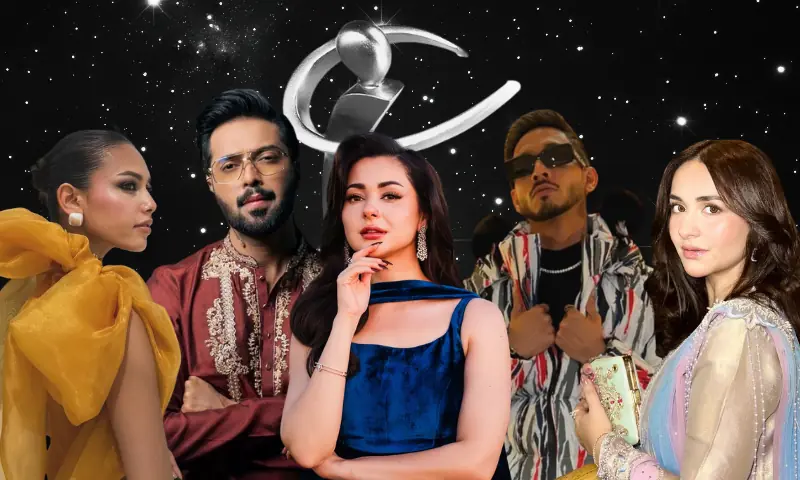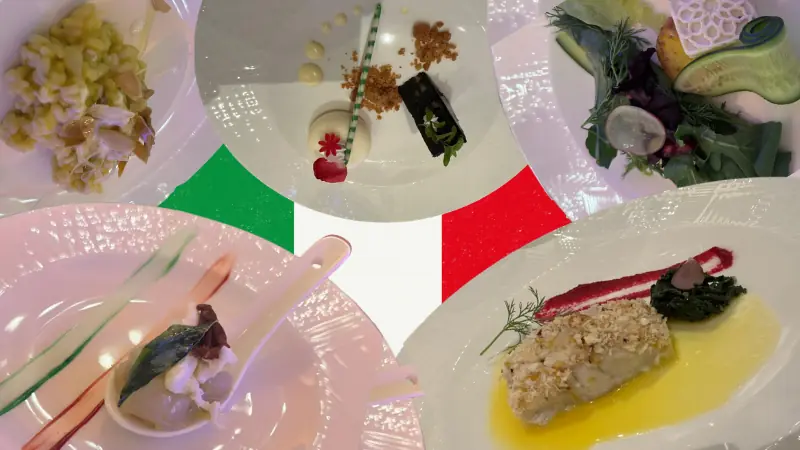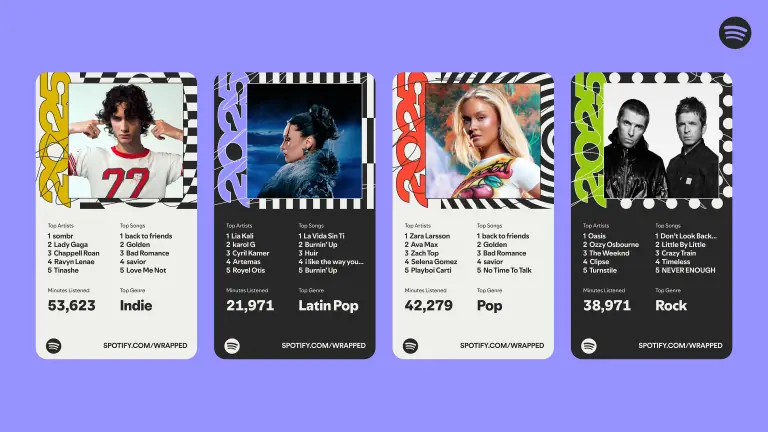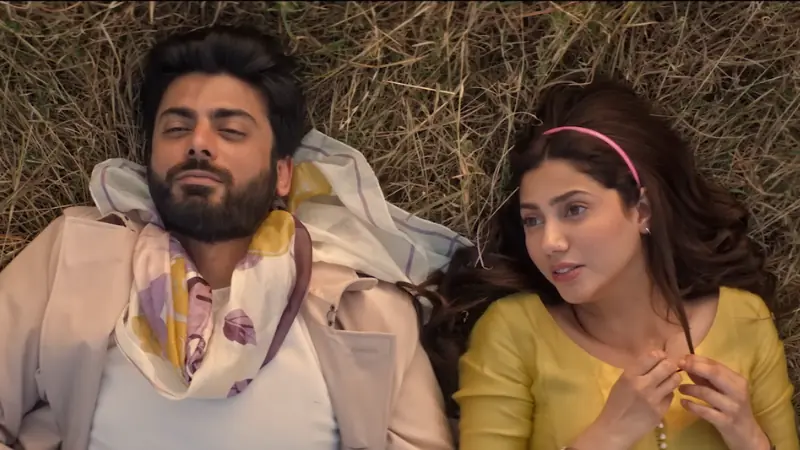Bushra Ansari's fab website is a much-needed tribute to Pakistani TV's history
‘Golden period.’ It’s an easy, catch-all turn of phrase.
It's also a concise alternate for ‘the good old days of the PTV', a neater way to say 'the Waheed Murad era of cinema’ and a quick acknowledgement of the greats that preceded today’s stars, even though we may not be terribly familiar with all their past achievements.
So we blanket our ignorance with the necessary nod to times gone by, and move on. Isn't it a pity that we aren’t better acquainted with our history?
Our experience of the ‘golden period’, for those of us who have actively sought it out, is formed by slow buffering Youtube videos, the occasional screening of a classic, or the one-off exhibition of film buff Guddu Khan’s vast collection of memorabilia. We hurray at these scattered opportunities, hail them as ‘much-needed’ (which they undoubtedly are), but they're no substitute for a proper cultural archive — a concrete, cohesive, comprehensive collection of records that document our history and make it readily available to the public.
That’s what Nariman Ansari, a 35-year-old photographer and visual artist based in Toronto and the elder daughter of iconic actor-comedian-writer Bushra Ansari, set about to create.
 |
| Bushra Ansari with Nariman and her daughter — Photograph by Ahmed Nasir |
Rescuing the contents of a cardboard box that held photographs, articles and other records of her mother’s life on and off screen — documents once endangered by their proximity to the sea in Bushra’s former residence — and scouring the internet for everything else she could find, Nariman decided to put it all together and make public an archive of her mother's life and work. Two and a half years later, the result is bushraansari.com.
We lack a centralized archive devoted to Pakistani TV and cinema's glory days. Isn't it a pity we aren’t better acquainted with our history?
Rich in content, this is a website that also looks beautiful, and one can’t say the same about many other celebrity websites in Pakistan. Since it’s a first, the star in question was a tad skeptical about her daughter’s labour of love, but ultimately agrees that it was a good project to undertake.
"It'll make it easy for me introduce myself to other people," the household name Bushra Ansari had said to Dawn.com, in all seriousness.
Bushraansari.com lets fans get to know her a little more intimately. For instance, you can view photographs of her time as a young star on Kaliyon Ki Mala, catch a glimpse of her wedding shoot and admire her magazine covers on the site's timeline.
 |
| Bushra with her husband Iqbal Ansari at the PTV Awards in 1986 - key moments of her life and career are encapsulated on the interactive timeline — Screengrab from bushraansari.com |
You can also watch now-obscure video clips of her earlier comedy sketches and listen to recordings of her songs in the Archives section. It is the latter feature of the website that is Bushra's favourite.
"The collection of old songs on the website revived a lot of old memories. I joined PTV as a singer, I never rated myself as a proper singer, but they're so many songs that aren't with me anymore, so I'm glad some were preserved."
“This sort of thing is new for our kind of people,” Bushra told Dawn.com of her contemporaries, “We never promoted ourselves, always underestimated what we did, I still don’t think I’ve done anything outstanding. But the new generation is different. They realise the value of things. Moin (Akhtar) was a much bigger star, as are people like Anwar Maqsood and Uzma Gillani. An initiative like this should happen for them too."
“This sort of thing is new for our kind of people,” Bushra told Dawn.com of her contemporaries, “We never promoted ourselves, always underestimated what we did, I still don’t think I’ve done anything outstanding. But the new generation is different. They realise the value of things."
In a chat with Nariman, the site's creator revealed what how she stumbled upon the idea to create this archive.
Dawn: This question is a tad redundant, but let’s start with it for some context: What inspired you to create a digital archive of your mother's life and work? As in, not every celebrity's daughter or son does it. And many celebrities seem to consider it to sufficient to engage with their fans over social media, so why build an interactive website to host the archive?
Nariman Ansari: It was Moin Akhtar's death that inspired me to act on my frustration at the lack of interest shown to artists and Pakistani art history by institutions.
I realized as I saw footage of his brilliant work from the ‘80s being shown on television during the coverage of his death, how children born after the 'satellite invasion' probably knew him only as the guy on Loose Talk. So many of them may be seeing that footage of his amazing work in the ‘80s as Rozy and Showtime for the very first time. It made me realize how the same generations would know very little of the amazing work done by artists like Roohi Bano, Anwar Maqsood, Talat Hussain, Shafie Muhammad, and even my mother, who is known more nowadays for her work as Saima Chaudhry. Would these people know of Aangan Terha? Or her famous parodies of Salma Agha, Noor Jahan?
 |
| The website rescues from Youtube's unchartered recesses such gems as Bushra's performance in Aangan Terha and her parodies of Salma Agha — Screengrabs from bushraansari.com |
I was privileged to be born into a home where I saw these people around me, and witnessed their work up close. But how unfair it is that Pakistanis don't have serious documentation of their cultural history. And it made me confront the fact that I was in a position to start with the artist in my own home. I knew my mother had been saving photos and news clippings in a giant cardboard carton. Having a design background made me realize how interesting it could be to display those things. Having seen some amazing exhibits on movie stars on our visits abroad and beautifully designed biographies, I knew these things help to define the story of culture. So I spoke to my mother about it, and I realized that even though a book would be lovely, it would not offer the level of accessibility that a website would.
"I wanted to build something that would be like an expansive archive of her [Bushra Ansari's] life," says Nariman. "Maybe students of media could find it useful. Her story is also the story of television in Pakistan in a way."
I wanted to create a 'web museum', something that would give a real experience of how she started and all that she has achieved. I wanted to build something that would be like an expansive archive of her life. Maybe students of media could find it useful. Her story is also the story of television in Pakistan in a way. She started soon after television was launched in Pakistan, and she is still working and reinventing herself.
Dawn: Could elaborate on the process of creating this website? We understand that it's been years in the making and was your collaborative effort with many of your friends.
NA: I realized the first step was digitizing the images and articles. So I called a friend of mine who had just graduated from Indus Valley to see if he would be interested in doing it for me. Nadir Shahzad and Bemisal Iqbal both would come over to my place and sit and scan and photograph and download images and articles at my place over the course of two months in 2012.
I immigrated to Canada so I then had to put things on hold. I then tried to find the best way to work on this website. I was hoping to find someone who would manage the production of the website and build a team to put it together. Shehram Mokhtar was recommended to me by an old friend. He is currently managing the Media Sciences program at SZABIST, and has a Masters in Communication and Society from University of Oregon. I thought he would be well qualified to handle such a project, and I got in touch with him online.
I had a very clear idea of how I wanted the website to be. It needed to engage people, and not just be a bunch of pretty pictures. It had to reflect the expanse of her career. And be contemporary and colourful.
 |
| Illustrations are a strong element of the website — Screengrabs from bushraansari.com |
I always wanted to have illustrations as a strong element of the website so when Shehram suggested Shariq Chhapra, I was thrilled. He is a brilliant illustrator who has created some amazing work for the magazine XTRA in the past, as well as album covers for various musicians including Ali Azmat. He also happened to be my teacher at Indus Valley. Anyway, they brought in the web developer Aaftab Ahmed, and got to work.
There was an immense amount of information to organize on the site. I also wanted to not create dense biographies and testimonials, etc., since this wasn't my aim.
Structurally, there were two components for me, the archive and the timeline. The Timeline that we have built is essentially a story of her life. I wanted to give people a way to see her journey and achievements in the way that they may read an interactive book.
This was the biggest challenge as far as the web development was concerned and caused the main delays for us. I know the archive section is quite detailed, and may be more suited for serious fans, but I also wanted to build something that would introduce younger fans or new fans to the way she had become who she was, so they may discover aspects of her work that they may be unaware of.
"We desperately need a way to preserve our cultural history," says Nariman
Dawn: The archival process, we assume, wasn't easy. What other reasons do you think are behind the fact that few people in Pakistan concern themselves with archiving and more importantly, providing public access to those archives?
NA: I was completely and am still in awe of the work that the Citizens Archive Project is doing and has done. How important it is that we as a nation never forget how we came to be, through the stories of ordinary people. It made me realize even more how desperately we need a way to preserve our cultural history. I have also shared all these images and articles with the Citizens Archive in the hope that they may one day use them to educate Pakistanis about our culture. I do hope that more people and institutions will take the initiative to build archives on our artists, because culture is the soul of the nation. And we need to give it due respect.
Dawn: What do your parents think of the website?
NA: My mother still wonders if anyone will find this project useful. But in a way it’s my tribute to her. Not as her daughter, but as a fan. She has inspired women all across Pakistan for generations to be funny, to speak up, to laugh, and to think.










